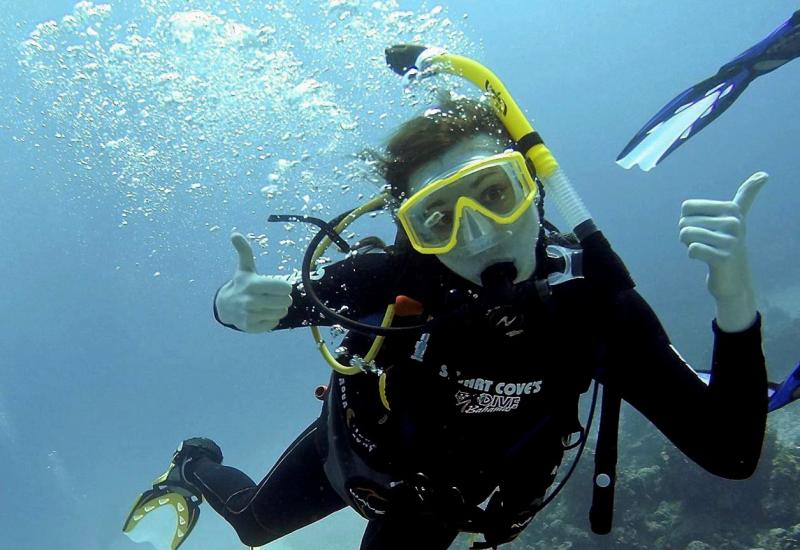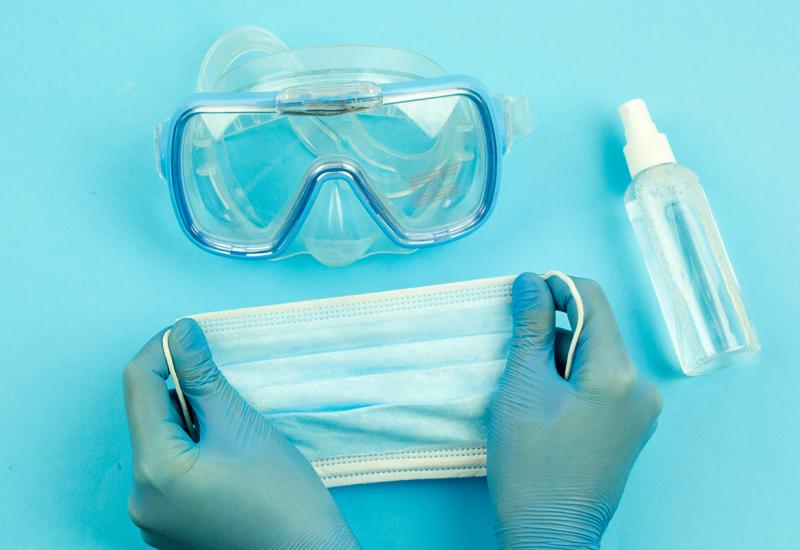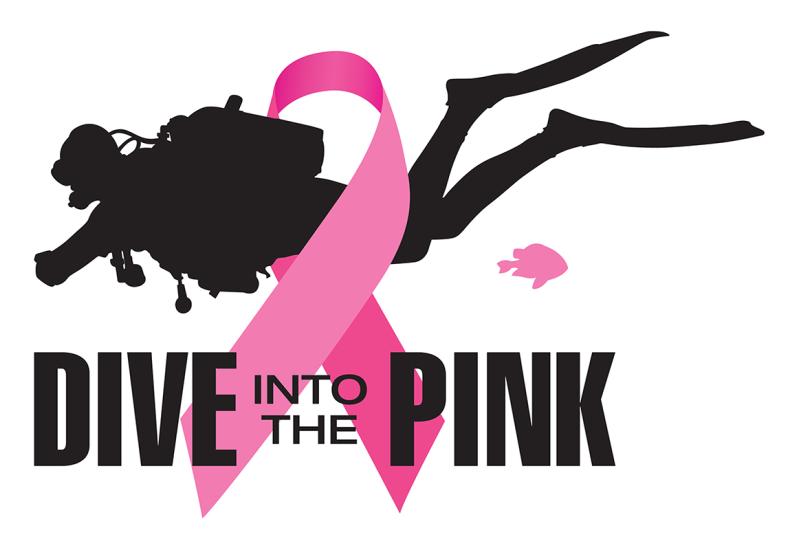Boost Your Bottom Time
September 2006
By Selene Yeager
||
|---|
|

|
| Try a little yoga to improve your air consumption. Pictured here: Free-dive champ Tanya Streeter. Photo by Stephen Frink|
If you want better gas mileage, you drive more slowly and invest in a fuel-efficient car. The same is true for oxygen--the gas we divers burn to make energy as we fin around the deep blue sea. To get more minutes out of every tank, we need to breathe more slowly and move more efficiently. New research shows yoga can help.
In a study of 58 men and women, researchers from Thailand asked half the group to perform specific chest-opening yoga poses for 20 minutes three days a week, while the rest of the volunteers continued their normal activities, but did not practice yoga. After just six weeks, participants performing the yoga moves had significant improvements on six of seven traditional measures of respiratory function and breathing capacity. They could take in more oxygen and exhale more fully with greater ease. Though the researchers hoped the study findings could benefit people with breathing illnesses like asthma, it may also help people who need to breathe their best, like scuba divers.
"Yoga adjusts your posture by opening your chest, lengthening your spine and reducing muscle tension, which can have a huge positive effect on breathing," says pulmonary expert Paul Davenport, Ph.D., who has worked with Navy divers. "It also helps you relax and control stress and anxiety by controlling your breathing. As a scuba diver, that's a great skill to have."
Synchronized Breathing
Breath control is so essential to yoga that practitioners have a special practice called pranayama, which is devoted solely to maintaining awareness of and controlling the breath. In pranayama, you breathe deeply and fully through your nose, completely filling your lungs with oxygen, and then exhale fully and completely through your nose, dispelling your carbon dioxide. As you move through your postures, you link each movement to a deep inhalation or exhalation. Pranayama calms the mind and improves oxygen supply through the body, so you fully oxygenate and nourish every cell. The result: Fewer breaths per minute and, if diving, longer tank time.
"Obviously, you'll be breathing through your mouth underwater," says diver and yoga instructor Prisca Boris, who co-founded Yoga for Athletes, a Vail, Colo., training facility. "The most important thing is keeping your inhales and exhales the same length. You're not gulping air, panting or holding your breath. You're letting your lungs expand and getting a full breath, which allows you to calm down and have a more pleasurable experience."
The following yoga poses, or asanas, are designed to lengthen scuba-specific muscles in your upper and lower body, with special emphasis on the torso and chest cavity. Perform each pose twice, holding each pose for 30 to 60 seconds. Breathe deeply, smoothly and evenly, inhaling and exhaling as you move your body in and out of position. The whole routine should take no longer than about 15 minutes. Aim to do it two to three days a week. After several sessions, you should feel less tension in your chest and shoulder muscles, which are typically tight and short from hunching over steering wheels and computer keyboards all day. You'll feel longer through the spine, which will allow your lungs to inflate fully. And your hips will be looser, so you can stand tall and breathe all the way into your belly.
|||
|---|---|
|

|
Cobra
Lie face-down on the floor with your legs extended and tops of feet on the floor. Place your hands on the floor beneath your shoulders, hugging your elbows close to your ribs. Press your pelvis and thighs into the floor and straighten your arms to lift your chest off the floor. Raise your torso as high as comfortably possible, while keeping your hips in contact with the floor. Keep your shoulders down and back, lifting your breastbone and opening your chest and extending your spine.
Breathing benefit: Expands chest cavity and lengthens spine for easier lung expansion.
|||
|---|---|
|

|
Downward-Facing Dog
Begin on your hands and knees. Place your feet hip-width apart, with toes tucked under. Place your hands shoulder-width apart. Press into your palms and straighten your legs, lifting your tailbone toward the sky while pulling your navel toward your spine and gently pushing down through the heels to stretch the back of your legs. (Keep your knees bent if this is too uncomfortable.) Keep your shoulders down and back, and allow your head to hang relaxed between your arms.
Breathing benefit: Improves flexibility in your back, hamstrings and calves, so you can fin more easily and efficiently.
|||
|---|---|
|

|
Crescent Lunge
From a standing position, take a giant step forward with your right leg and bend your knees, lowering toward the floor until your right knee is bent 90 degrees and the left knee grazes the floor. Lift your breastbone and raise your arms overhead. Clasp your hands together so the index fingers point toward the sky. Gently bend backwards and look toward the sky. Repeat on the opposite side.
**
Breathing benefit:** Stretches and opens the hips, making it easier to fully expand your diaphragm with every breath.
|||
|---|---|
|

|
Bridge
Lie back on the floor with knees bent and feet flat on the floor. Bring your heels as close to your butt as comfortably possible. Extend your arms down at your sides, palms flat on the floor. Keeping your thighs and feet parallel to each other, press into your feet, contract your glutes and press your hips up toward the ceiling as far as comfortably possible, so you are supporting your torso with your shoulders. Clasp hands on the floor behind your back. Open the shoulders and press breastbone toward chin.
**
Breathing benefit:** Lengthens spine and opens hips for improved breathing posture.
|||
|---|---|
|

|
Reverse Plank
Sit on the floor with legs extended straight in front of you. Place hands directly under shoulders and behind hips for support, with palms flat on the floor, fingertips pointed forward. Point your toes and press your hips toward the ceiling as high as comfortably possible.
**
Breathing benefit:** Pulls shoulders back and opens chest cavity for full breathing potential.
|||
|---|---|
|

|
Cow Face Pose
Stand with your shoulder blades down and back. Bend your left arm behind your back. Place the back of the left hand on your back and slide it up between your shoulder blades. Extend your right arm overhead, and bend the elbow, reaching your right hand between your shoulders to touch your left hand. Clasp fingers if possible. If your shoulders are too tight, place a small rolled towel in your right hand and use that to "connect" your hands. Gently pull your elbows in opposite directions to increase the stretch. Then switch sides.
**
Breathing benefit:** Keeps shoulders properly aligned and chest open.
September 2006
By Selene Yeager
|| |---|
|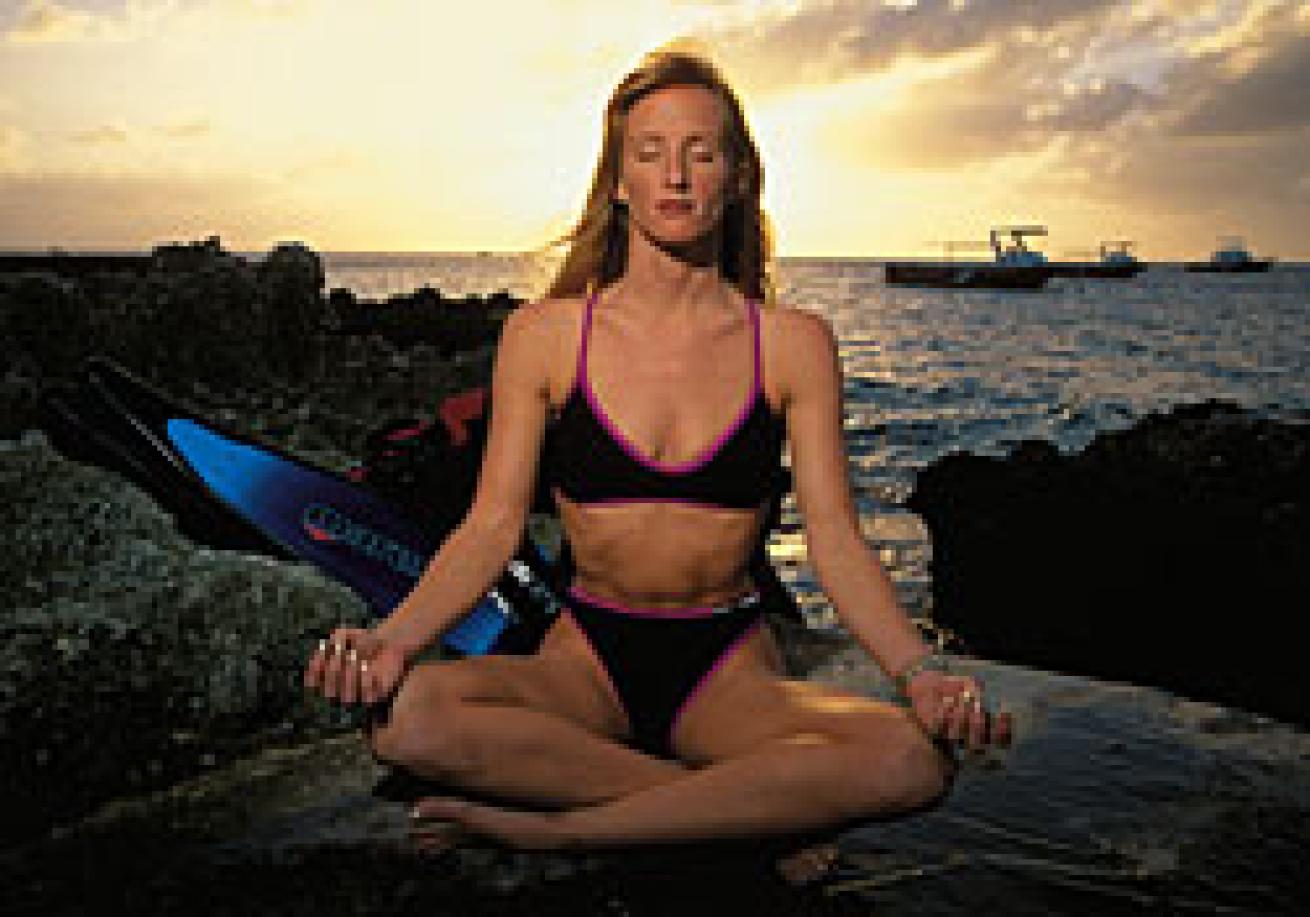
| | Try a little yoga to improve your air consumption. Pictured here: Free-dive champ Tanya Streeter. Photo by Stephen Frink|
In a study of 58 men and women, researchers from Thailand asked half the group to perform specific chest-opening yoga poses for 20 minutes three days a week, while the rest of the volunteers continued their normal activities, but did not practice yoga. After just six weeks, participants performing the yoga moves had significant improvements on six of seven traditional measures of respiratory function and breathing capacity. They could take in more oxygen and exhale more fully with greater ease. Though the researchers hoped the study findings could benefit people with breathing illnesses like asthma, it may also help people who need to breathe their best, like scuba divers.
"Yoga adjusts your posture by opening your chest, lengthening your spine and reducing muscle tension, which can have a huge positive effect on breathing," says pulmonary expert Paul Davenport, Ph.D., who has worked with Navy divers. "It also helps you relax and control stress and anxiety by controlling your breathing. As a scuba diver, that's a great skill to have."
Synchronized Breathing
Breath control is so essential to yoga that practitioners have a special practice called pranayama, which is devoted solely to maintaining awareness of and controlling the breath. In pranayama, you breathe deeply and fully through your nose, completely filling your lungs with oxygen, and then exhale fully and completely through your nose, dispelling your carbon dioxide. As you move through your postures, you link each movement to a deep inhalation or exhalation. Pranayama calms the mind and improves oxygen supply through the body, so you fully oxygenate and nourish every cell. The result: Fewer breaths per minute and, if diving, longer tank time.
"Obviously, you'll be breathing through your mouth underwater," says diver and yoga instructor Prisca Boris, who co-founded Yoga for Athletes, a Vail, Colo., training facility. "The most important thing is keeping your inhales and exhales the same length. You're not gulping air, panting or holding your breath. You're letting your lungs expand and getting a full breath, which allows you to calm down and have a more pleasurable experience."
The following yoga poses, or asanas, are designed to lengthen scuba-specific muscles in your upper and lower body, with special emphasis on the torso and chest cavity. Perform each pose twice, holding each pose for 30 to 60 seconds. Breathe deeply, smoothly and evenly, inhaling and exhaling as you move your body in and out of position. The whole routine should take no longer than about 15 minutes. Aim to do it two to three days a week. After several sessions, you should feel less tension in your chest and shoulder muscles, which are typically tight and short from hunching over steering wheels and computer keyboards all day. You'll feel longer through the spine, which will allow your lungs to inflate fully. And your hips will be looser, so you can stand tall and breathe all the way into your belly.
||| |---|---|
|<
table>
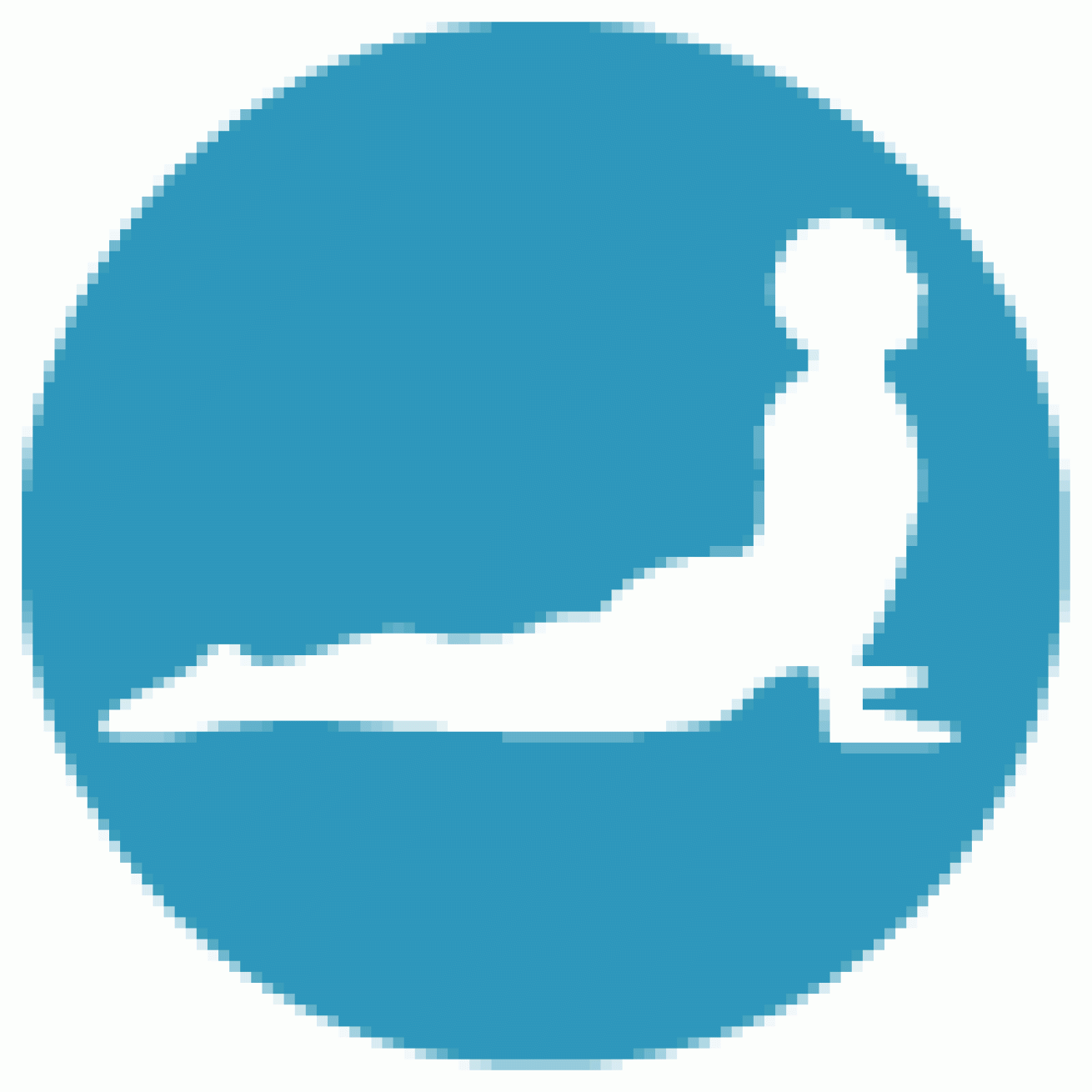
|
Lie face-down on the floor with your legs extended and tops of feet on the floor. Place your hands on the floor beneath your shoulders, hugging your elbows close to your ribs. Press your pelvis and thighs into the floor and straighten your arms to lift your chest off the floor. Raise your torso as high as comfortably possible, while keeping your hips in contact with the floor. Keep your shoulders down and back, lifting your breastbone and opening your chest and extending your spine.
Breathing benefit: Expands chest cavity and lengthens spine for easier lung expansion.
||| |---|---|
|<
table>
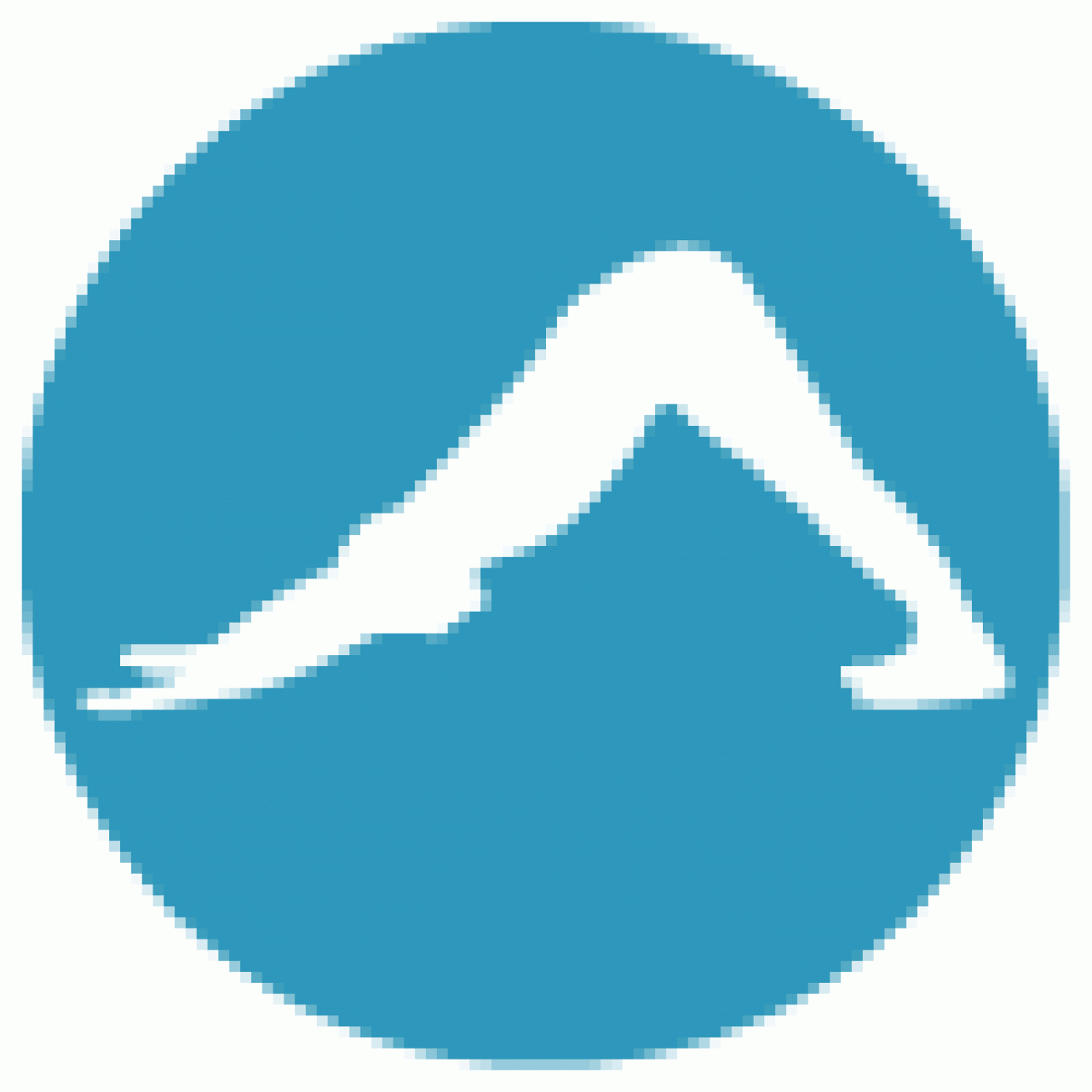
|
Begin on your hands and knees. Place your feet hip-width apart, with toes tucked under. Place your hands shoulder-width apart. Press into your palms and straighten your legs, lifting your tailbone toward the sky while pulling your navel toward your spine and gently pushing down through the heels to stretch the back of your legs. (Keep your knees bent if this is too uncomfortable.) Keep your shoulders down and back, and allow your head to hang relaxed between your arms.
Breathing benefit: Improves flexibility in your back, hamstrings and calves, so you can fin more easily and efficiently.
||| |---|---|
|<
table>
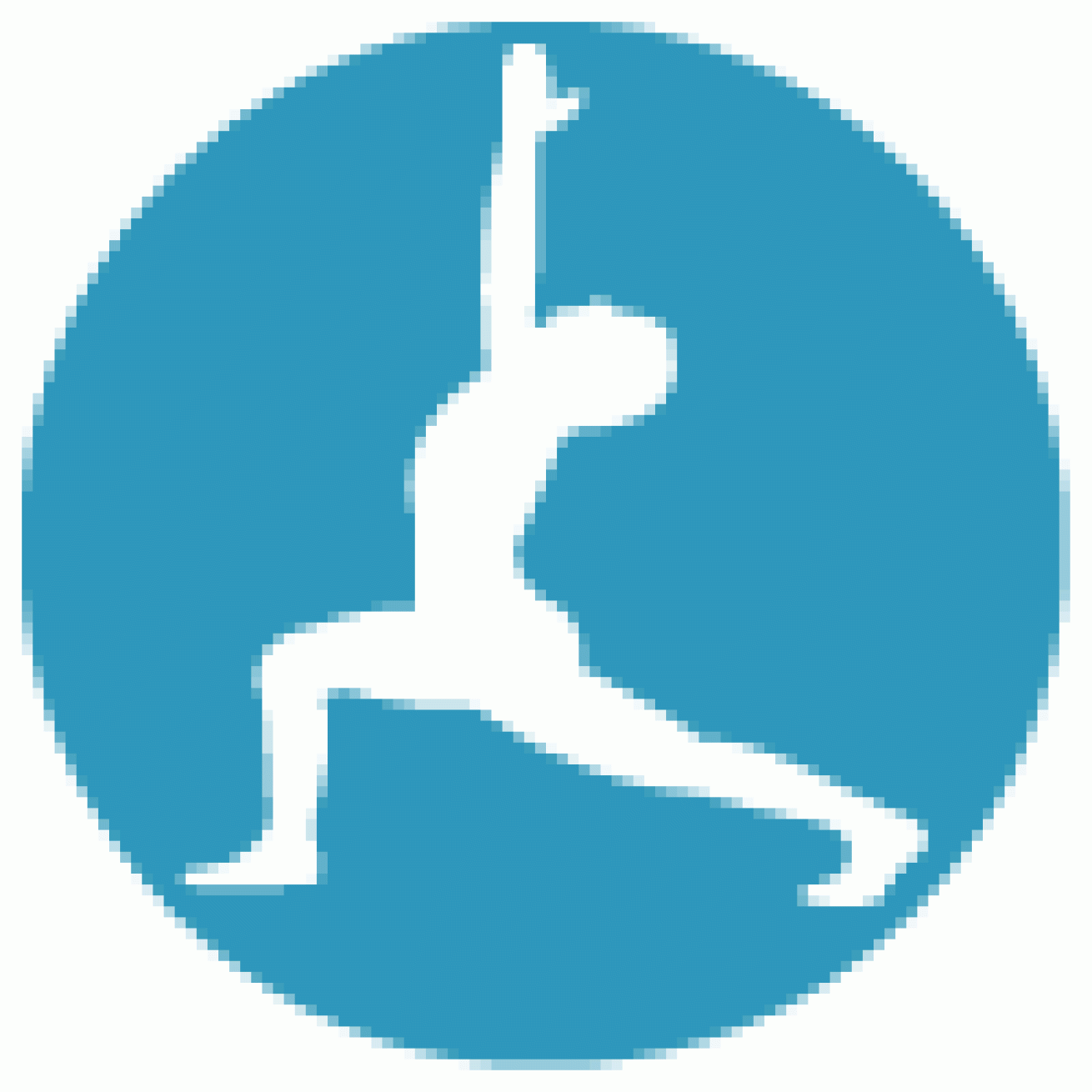
|
From a standing position, take a giant step forward with your right leg and bend your knees, lowering toward the floor until your right knee is bent 90 degrees and the left knee grazes the floor. Lift your breastbone and raise your arms overhead. Clasp your hands together so the index fingers point toward the sky. Gently bend backwards and look toward the sky. Repeat on the opposite side.
**
Breathing benefit:** Stretches and opens the hips, making it easier to fully expand your diaphragm with every breath.
||| |---|---|
|<
table>
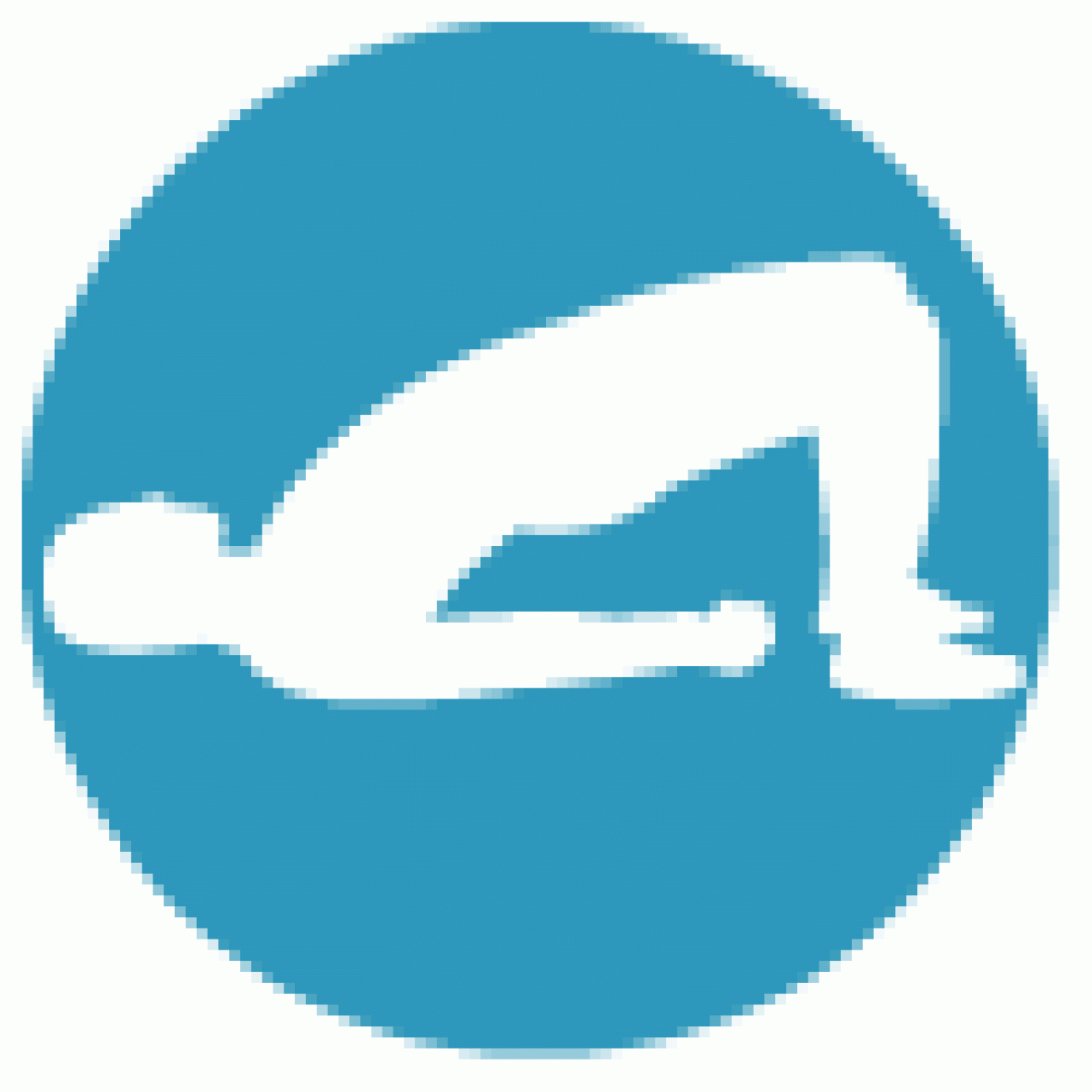
|
Lie back on the floor with knees bent and feet flat on the floor. Bring your heels as close to your butt as comfortably possible. Extend your arms down at your sides, palms flat on the floor. Keeping your thighs and feet parallel to each other, press into your feet, contract your glutes and press your hips up toward the ceiling as far as comfortably possible, so you are supporting your torso with your shoulders. Clasp hands on the floor behind your back. Open the shoulders and press breastbone toward chin.
**
Breathing benefit:** Lengthens spine and opens hips for improved breathing posture.
||| |---|---|
|<
table>
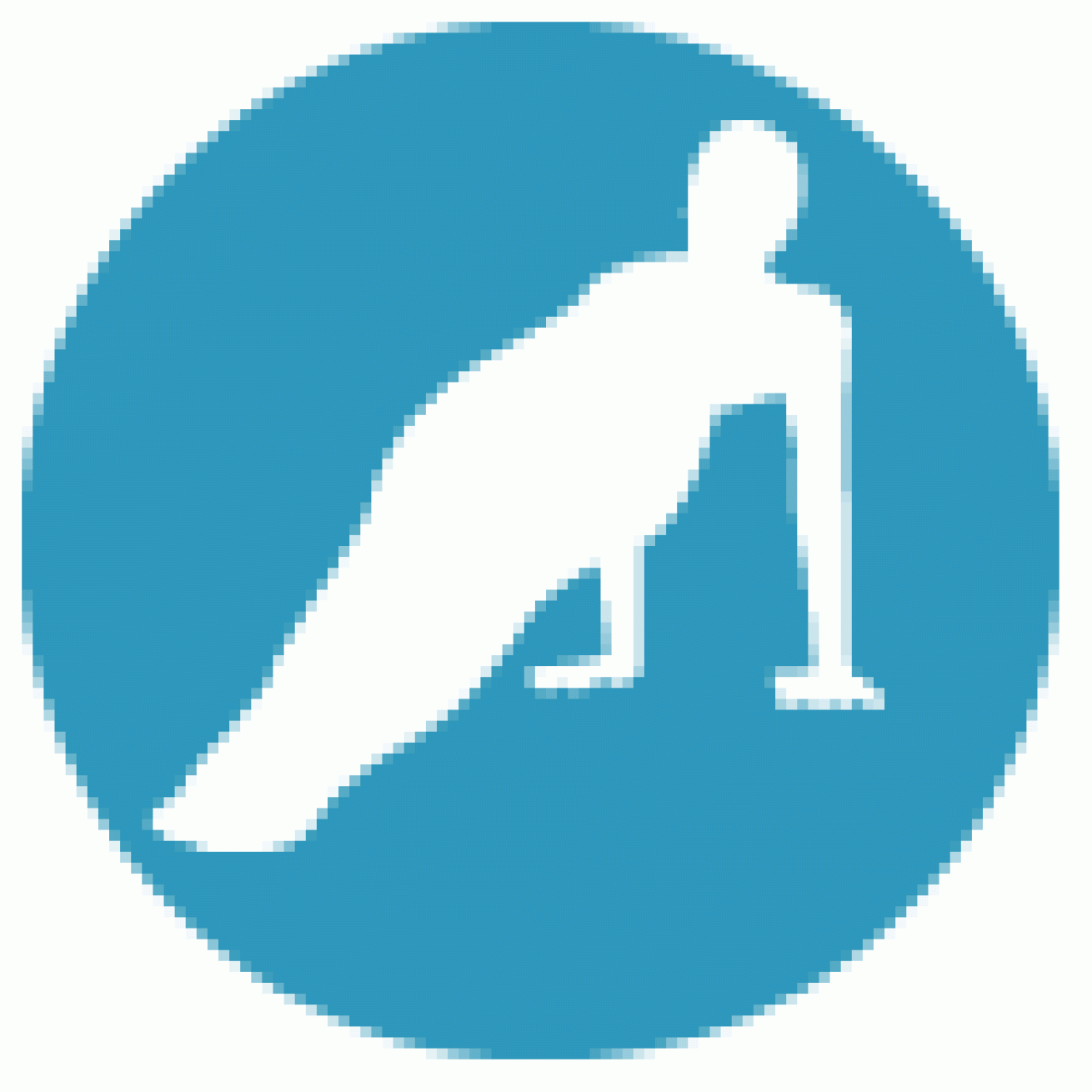
|
Sit on the floor with legs extended straight in front of you. Place hands directly under shoulders and behind hips for support, with palms flat on the floor, fingertips pointed forward. Point your toes and press your hips toward the ceiling as high as comfortably possible.
**
Breathing benefit:** Pulls shoulders back and opens chest cavity for full breathing potential.
||| |---|---|
|<
table>
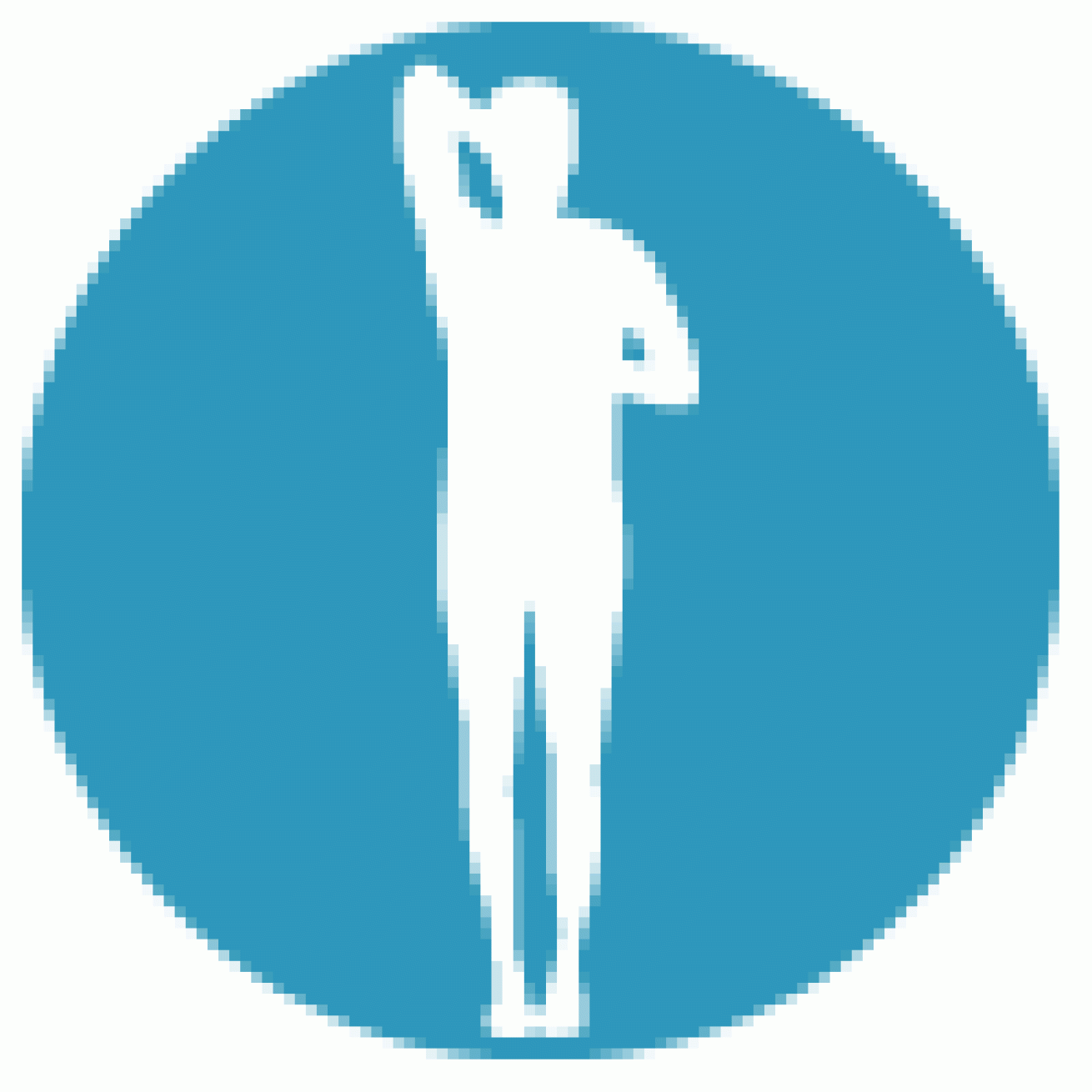
|
Stand with your shoulder blades down and back. Bend your left arm behind your back. Place the back of the left hand on your back and slide it up between your shoulder blades. Extend your right arm overhead, and bend the elbow, reaching your right hand between your shoulders to touch your left hand. Clasp fingers if possible. If your shoulders are too tight, place a small rolled towel in your right hand and use that to "connect" your hands. Gently pull your elbows in opposite directions to increase the stretch. Then switch sides.
**
Breathing benefit:** Keeps shoulders properly aligned and chest open.

